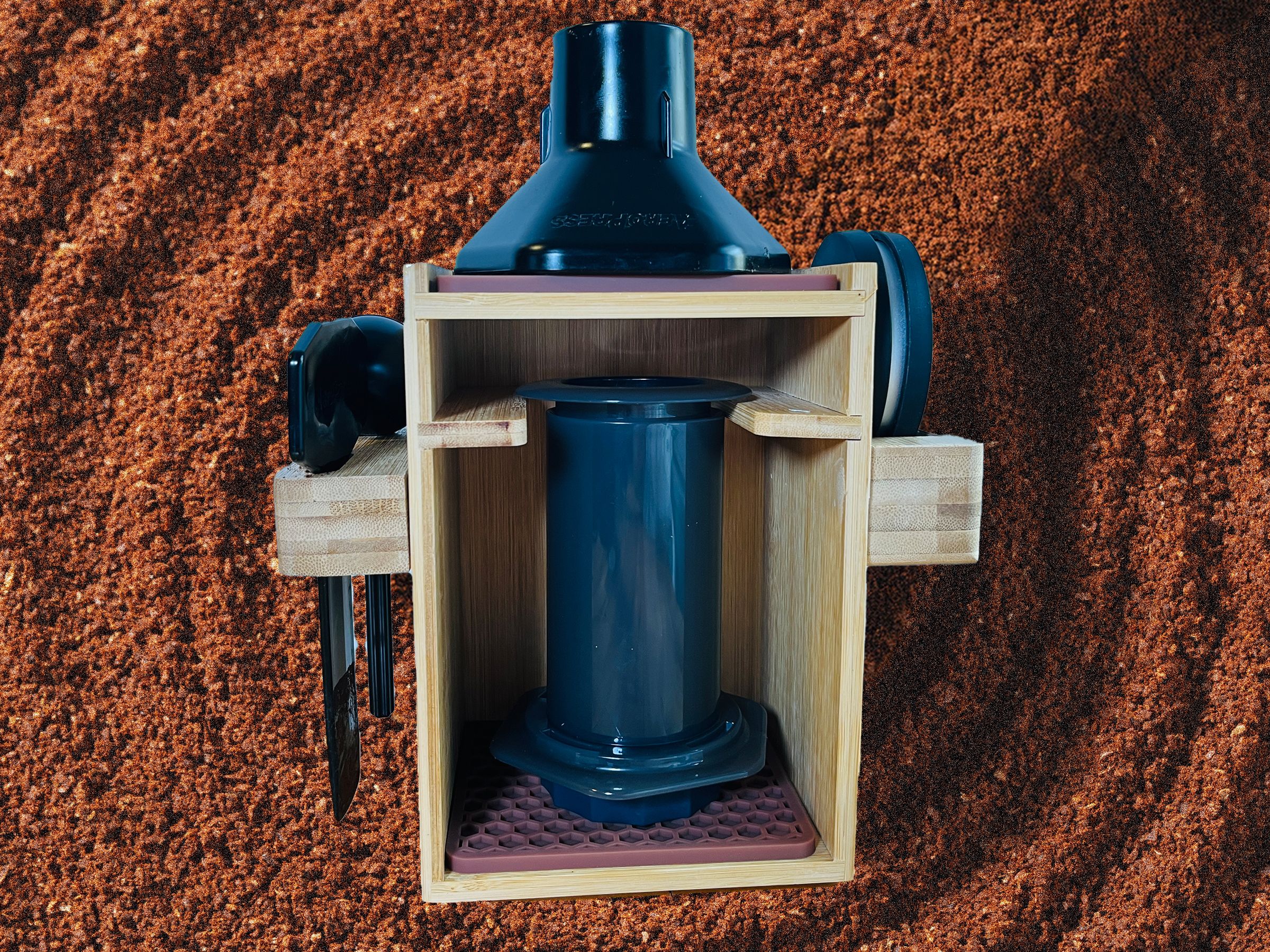[[{“value”:”
Last month in April, news went out that Yuga Labs, creators of the at-once mega-popular Bored Ape Yacht Club NFT, was undergoing restructuring. What followed was a round of layoffs as CEO Greg Solano — who uses the nickname Gargamel — bluntly stated that the company had “lost its way.”
That statement came just weeks after Bored and Hungry, a burger place that let customers order food with their cryptocurrency, shuttered its Long Beach location just two years after opening. Branded around the owner’s BAYC token, the ape-themed restaurant was touted as the first-ever “crypto fast food joint” — its closing bolstering the notion that the farcical BAYC-mania that gripped the country during the NFT boom of 2021 was finally on its last legs.
But when Bored and Hungry first opened, there were lines around the corner, signaling vindication to the apes, and propping up the sense that their investment into these NFTs, and in the community, were legit — both culturally and financially. To those on the outside, this was another example of just how dumb NFTs were becoming. During the NFT boom from 2021-2022, you couldn’t escape Yuga Labs’ ugly, anthropomorphized monkeys. Released in 2021 by Solano and Wylie Aronow (known as Gordon Goner), Bored Ape Yacht Club — a collection of 10,000 NFTs of edgy-looking primates — was one of the most successful web-3 Ethereum-based tokens to come out of the NFT frenzy.
It was hawked on late-night shows, featured in giant ads in Times Square, and almost every celebrity in the mainstream was “buying one.” There were talks of movies and TV deals, with Seth Green at one point working on a series based around his personal Bored Ape. Yuga Labs even started teasing a huge videogame within the Metaverse called Otherside. For many, it was a weird time to be alive, like aliens had taken over the world — how could these ugly apes capture the zeitgeist so fast?
“Beyond the things they had control over, they had good timing,” said Dan Olson, a documentarian and Youtuber best known for his channel Folding Ideas. “The guys at Yuga are savvy marketers with real social connections that let them get their product in front of real celebrities and other behind-the-scenes folks…and used that access with their initial crypto-audience success to further astroturf BAYC as a thing that normal people thought they needed to care about.”
It’s hard to overstate just how popular these little apes had become, but they were mainstream — a status symbol for the rich and the blueprint for success in the burgeoning NFT marketplace. Traditional buyers were buying apes for thousands, believing them to be legitimate forms of financial investment. At one point, Yuga Labs had managed to raise $450M in 2022, leading to a company evaluation of $4bn. To some, BAYC was the coolest name in tech.
Yuga Labs and its investors were seemingly on top of the world — until they weren’t. By 2023, the NFT bubble had burst, which negatively affected the perception of the industry as a speculative and volatile market. The downfall was marked by a steep decline in sales and a loss of public interest. As the hype subsided, many investors found themselves holding assets that had plummeted in value, leading to widespread financial losses and even a class action lawsuit against Yuga. The planned movies were shelved, the massive Metaverse game has long been teased but is still unreleased, and the Seth Green show legally can’t be made.
This fall was further compounded by regulatory scrutiny and skepticism from TradFi sectors, which questioned the sustainability and utility of NFTs beyond their initial novelty. Consequently, BAYC’s floor price on OpenSea hit an all-time low — down 90 percent from its all-time high.
That might feel like the last remnants of this phenomenon turning to dust, but you shouldn’t dance on the graves of these apes just yet.
How Bored Apes blew up in the first place
To be clear, the art of Bored Ape Yacht Club was never the selling point. Not that it wasn’t important, but nobody had ever said that these apes made great art pieces.
“It’s immediately identifiable and polished enough that it pops even in contrast to other NFT projects that are doing the same thing,” Olson told Mashable. “BAYC, Humanz, and other ‘success stories’ do at least have artwork that looks like someone at some point spent some meaningful investment of their finite mortal lifespan working on [it], which does manage to stand out in contrast to imitators that were literally assembled in an afternoon.”
In his documentary Line Goes Up — The Problem with NFTs, Olson describes an average NFT buyer as flush with money, lacking business acumen, socially isolated, and chronically online. A primarily male audience that’s equivalent to housewives who fall victim to Multi-Level Marketing schemes — groups of people who spend a lot of time alone at home and who feel marginalized from traditional avenues of wealth.
The culture of buying digital art has also changed significantly in the past decade. In the early 2010s, niche corners of the internet saw 4chan and Reddit users buying Pepe the Frog memes. For example, Feels Good Man had a totally wild scene from 2020 showing a man spending $39,000 on a Homer Simpson Pepe ’cause he “thought it was funny.”
The initial craze started when digital artist Beeple sold his NFT collection during a Christie Auction House sale for $69 million. However, many of the newsworthy NFT purchases were of internet memes sold by the minor internet celebrities immortalized in them. “Overly Attached Girlfriend,” “Disaster Girl,” and “Nyan Cat” sold for hundreds of thousands of dollars.
Crypto investors imagine themselves as rags-to-riches new money, outside the normie systems of money and government, aspirationally wealthy but still down to earth, so the fiction of “the yacht club that says ‘fuck’ then farts on you” successfully pulled a lot of psychological levers.”
– Dan Olson to Mashable
And while the language surrounding NFTs as a way for artists to have more control of their art has some merit, Olson and many others have rightly pointed out that NFTs mostly exist to get people to buy crypto. The reality since its inception is that crypto isn’t really spendable. Thus, that initial meme community was then co-opted by self-serious finance bros with little understanding of niche internet culture and saw NFTs more as a genuine financial investment — which is a big part of how they got such a bad rap.
One BAYC buyer who spoke to Mashable anonymously out of concern that they might be doxxed said that they had bought two apes early on for 1-2 ETH each — worth around $1-4000 each at the time.
“I guess what drew me to purchase one was the financial gain. I saw the opportunity and saw the writing on the wall that there was a market for it,” they said. “It was around COVID, people were lonely and it was a community people had on Discord and Twitter. You had your ape identifier and people would fuck with you based on that. It gave people something to be a part of and be included.”
And while they noted the absurdity of trading pictures of cartoons, the buyer sees their purchase as a foot in the door for a crypto future.
“I think the utility is there long-term with NFTs, once larger things are tokenized like house deeds or ticketing,” they told Mashable. “So while the whole cartoon ape thing is absurd, this is really the beginning stages. Within the space, new metas happen and people flock to whatever is hot and apes were hot because NFTs were the hot thing.”
Bored Ape Yacht Club, specifically, beyond the lucky timing and social connections just stood out from other NFTs in the marketplace. As Olson explained, unlike other tokens Yuga Labs came off as one of the only “functioning adults” in the space. That in combination with a “strong outsider-chic, above-it-all narrative” that was “very effective on technocratic crypto investors.”
“Their aesthetic, the irreverent attitude of their marketing materials, it was, from a product and marketing standpoint, well sculpted for their target market,” Olson said. “I suspect that they chose to base BAYC off apes in specific as an outgrowth of the use of [the term] ‘ape’ and ape-imagery in the meme stock mania that was still ongoing at the time and had very strong overlaps with crypto in terms of audience and messaging.”
How did the apes fare during ‘crypto winter’?
When NFTs were trendy, true believers thought their digital images could fetch millions. This was thanks in part to the highly volatile nature of NFTs and crypto, which shot up in price during the pandemic. This all happened in conjunction with the rise of small-time retail investors who connected on places like Reddit, leading to all that Gamestop “to the moon” Wall Street mania you might faintly remember from those strange days.
However, with “crypto winter” that all came crashing down, thanks in part to the global crypto collapse in 2022 following the bankruptcy of crypto hedge fund FTX. As the economic situation stabilized after the initial carnage, and people became less willing to take risks, investing in cryptocurrencies shifted from being perceived as an exciting and potentially lucrative hobby to being seen as a toxic, internet-based gambling addiction.
Now in 2024, ape holders come in three basic flavors: the bitter ones, like those currently suing Yuga Labs and the celebrities who helped hype the apes during the NFT explosion, claiming they were “misleadingly promoted” products; the intended users, who are still using their apes earnestly as branding for consumer endeavors; and grindset types, still holding on to their tokens in hopes of becoming kings in the decentralized future.
For that second camp, what made NFTs so popular in the first place was the potential use cases in branding — which is how Bored and Hungry came into existence. You can still find consumer goods marketed around licensed BAYC tokens in the form of whiskey that is a “Collaboration with Bored Ape #410,” apparel “featuring an official Bored Ape,” and even a water brand called “Ape Water” with Ape #3,628 printed on the can.
In the meantime, Yuga Labs has shaken up its leadership and staff. There were two CEO resignations in two years. The newest CEO, who happens to be Solano, a.k.a. “Gargamel,” returned to the role after a brief time away from the Miami-based company that oversaw those layoffs as mentioned above.
While Solano was away, Yuga Labs deepened its investment in the Metaverse gaming space, but as Fast Company put it earlier this year, the company is focused on more than games, and wants to be the Web3 equivalent of Disney — an “NFT entertainment conglomerate.” Despite the gaming push, Otherside remains unreleased, and Yuga has sold the IP of two of its other games. Most of this happened during Daniel Alegre’s short tenure as CEO — a role he was seemingly given due to his experience as an executive at Activision-Blizzard.
While Alegre was in charge, he told Bloomberg last year that Yuga would embrace the individual ape buyers who continued to push the brand with their consumer ventures. However with Solano back in charge and stating that the company has “lost its way,” there is an air of uncertainty about the future of Yuga and its larger ambitions in the metaverse and crypto space.
Mashable reached out to Yuga Labs for comment, but we haven’t heard back.
While the Apes’ creator focuses on the future, the present is bleak
The narrative around crypto and NFTs is built around what it can do for you and what it can do in the future. However, the reality is that none of those public-facing goals have yet to happen. As Bored Ape Yacht Club navigates the unpredictable waters of the crypto and NFT markets, its creators are setting their sights on future endeavors, leaving the project’s current state in a challenging position.
Despite the initial success and high market cap it once boasted, the value of the apes has dwindled significantly, representing only a fraction of its peak. On top of that, investors are doing anything to monetize their tokens that were at one point worth millions. However, they’ve lost a lot of popularity. If you fancy a trip to Thailand, you can buy yourself some weed from the Bored Ape Dispensary. Bored and Hungry still exists but only in Korea and the Phillipines. Ape Water is still a thing despite only being available in mini-marts around Las Vegas and some other parts of Nevada. And from all the expensive clothing collaborations it’s unclear how successful they’ve done as well.
“Right now the ape price is tanking a lot cause ETH-NFTs aren’t hot anymore,” the anonymous BAYC buyer told Mashable. “The new wave is Bitcoin Ordinals and Runes.”
As the year continues, Yuga Labs’ ability to adapt to these shifting tides will determine whether BAYC can regain its former glory or continue to face a diminishing market presence. But for right now, the cultural presence of this once illustrious “yacht club” still exists — barely — as overpriced streetwear.
The post Are Bored Apes still a thing in 2024? from Mashable appeared first on Tom Bettenhausen’s.
“}]] Article Continues..















